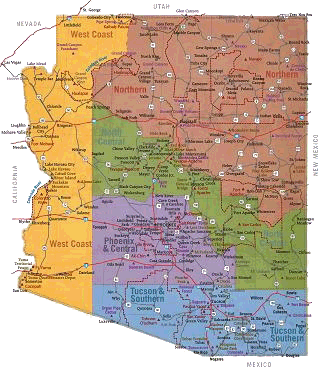Wildlife Viewing in July
Phoenix and Central Arizona
Haven’t taken time to learn your dragonflies? Make this the year! Summer heat brings out stunning dragonflies including bright orange flame skimmers and blue-eyed darners, with their intricate abdominal patterns resembling a mosaic tile of blue, black and white.
The artificial wetlands at the Gilbert Riparian Preserve near the crossroads of Greenfield and Guadalupe are among Grand Canyon State photographers’ favorite places to find the striking creatures and catch ‘em in the lens. Boyce Thompson Arboretum State Park (near the town of Superior) offers guided dragonfly walks once a month on summer Saturdays. Usery Mountain Park also offers ranger-guided “Wildlife Safari” two-mile nighttime hikes, and over at Hassayampa you’ll find plenty of fledglings, busy feeding and getting strong enough to survive the autumn migration.
Riparian Preserve
2757 E Guadalupe Rd, Gilbert, AZ 85234
https://www.gilbertaz.gov/
Boyce Thompson Arboretum
37615 E US Highway #60, Superior, AZ 85173
http://www.btarboretum.org/
Usery Mountain Park
3939 Usery Pass Rd, Mesa, AZ 85207
http://www.maricopacountyparks.net/
Zone-tailed hawks, common blackhawks and Harris hawks aren’t uncommon; bonus birds might include a yellow-billed cuckoo. Gray fox kits are adorable and photogenic, as are javelina youngsters – sometimes called “reds” before their coarse, bristly coats turn from russet to gray. Look for fox and javelina at dawn and dusk when they’re likely to be out feeding or approaching water.
Thousands of Mexican free-tailed bats emerging from a day roost beneath a bridge to take wing and hunt insects… now that’s an unforgettable sight! And one that’s repeated at sunset nightly at the Maricopa County Flood Control tunnels near the southeast corner of 40th Street and Camelback Road. Don’t be surprised to find other people gathered there, despite hot summer nights. Arizona Game and Fish Department’s popular “Bats Aren’t So Bad” series of workshops have raised awareness and benefits of the Valley’s maternity colonies of migrant bats, and the public has responded. The nightly show is free, and the dusk hour is a great one to watch for great blue herons flying over and to listen for screech owls hooting a territorial chant.
Northern Arizona
In the White Mountain region, ospreys continue to soar over Woodland Lake Park in Pinetop. At nearly any lake edged by cattails or other shallow vegetation, look and listen for the call of redwinged and yellow-headed blackbirds. Across U.S. Highway 180 from Luna Lake, a great blue heron rookery exists among the snags, giving keen observers the view of lanky young herons sitting oddly among the topmost branches. Belted kingfishers can be found traveling up and down rivers such as the Blue and Black, the East Fork of the Black near Diamond Point Campground, the Joy Fish Hatchery along the Blue River, and along the White River at the Alchesay National Fish Hatchery. Other riparian birds include black phoebe, purple martin, and common yellowthroat. In higher-elevation, colder rivers, watch for the American dipper. July 4th is the typical “opening day” for the start of the southward migration of the rufous hummingbird. They make the Arizona Game and Fish Department’s annual High Country Hummers birdbanding event, held every year on the last Saturday in July, a huge success, drawing hundreds of visitors to the Department's Sipe White Mountain Wildlife Area to witness the capture, data collection and banding of these and the other hummingbirds. A summer visit to Sipe may also bring observations of lazuli bunting, blue grosbeak, Virginia rail, maybe even an occasional indigo bunting, along the bottomlands of Rudd Creek. In deeper forests stay alert for northern goshawks – at this time of year their young are fledging and defensive adults will be sure to let you know if you’ve treaded into family territory.
Yellow-Headed Blackbird
Ospreys
Red Winged Blackbird
Belted Kingfishers
Tucson and Southern Arizona
The onset of the dramatic monsoon thunderstorms marks the breeding season of Montezuma quail, Cassin's and Botteri's sparrows and other grassland birds. Many species are on their second broods as the desert and mountains are transformed into a lush landscape. Owls become silent and shorebird numbers increase at ponds and lakes as the first southbound migrants begin passing through. Mid-summer is when wildlife photographers return to the Sulphur Springs Valley grasslands around Pearce, Sunsites and in the foothills of Cochise Stronghold to see whitetail does tending their tiny, spotted newborns. Fawns “drop” around the time of the annual monsoon rains; the reproductive cycle of Sonoran Desert Coues deer is timed for does to have the richest, greenest forage to provide for youngsters. Visit the tops of Sky Island Mountains during July and you may see ladybird beetles (“Ladybugs”) which have converged at the mountaintops… sometimes millions of them, carpeting shrubs and small trees close to the forest floor.

















